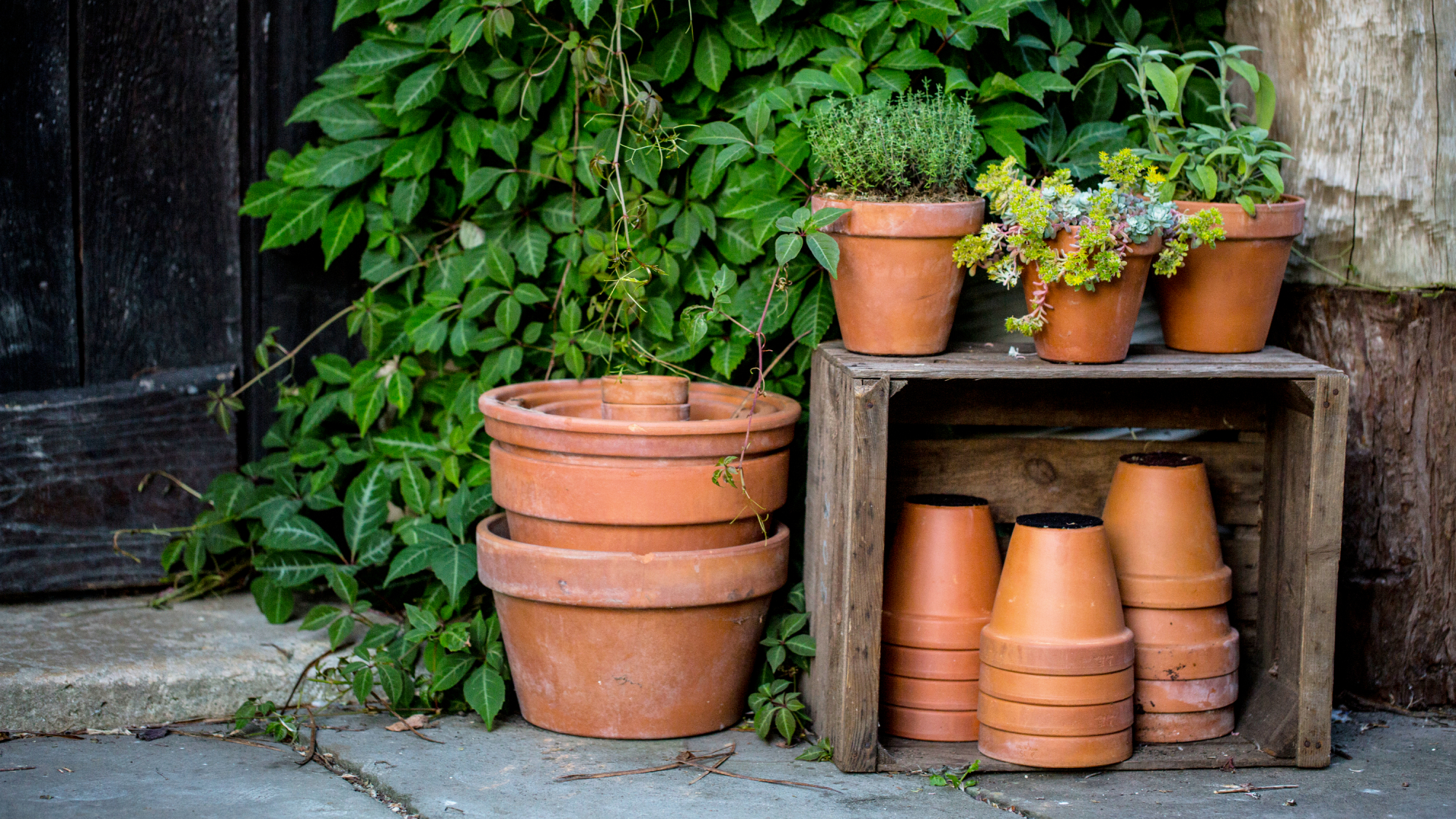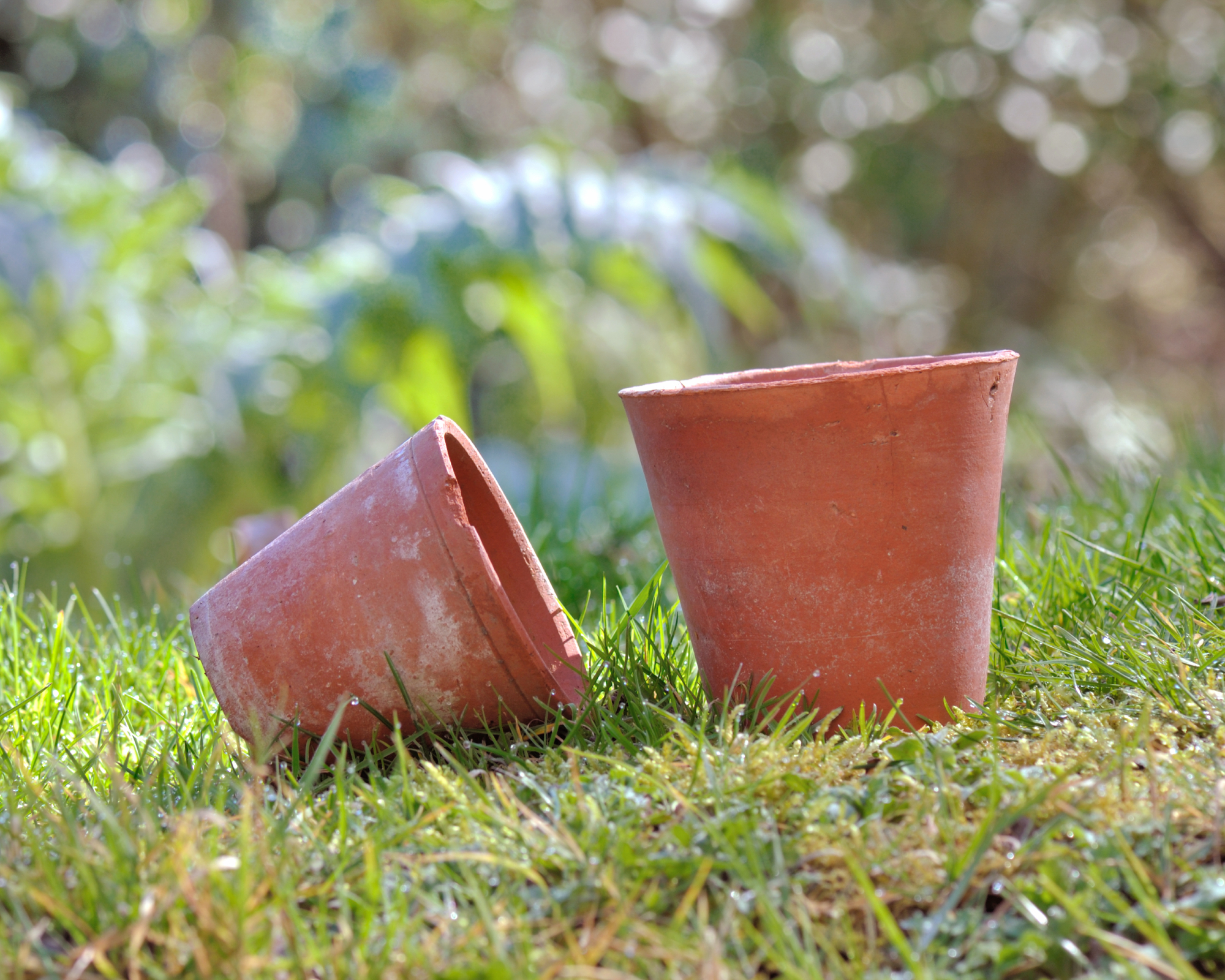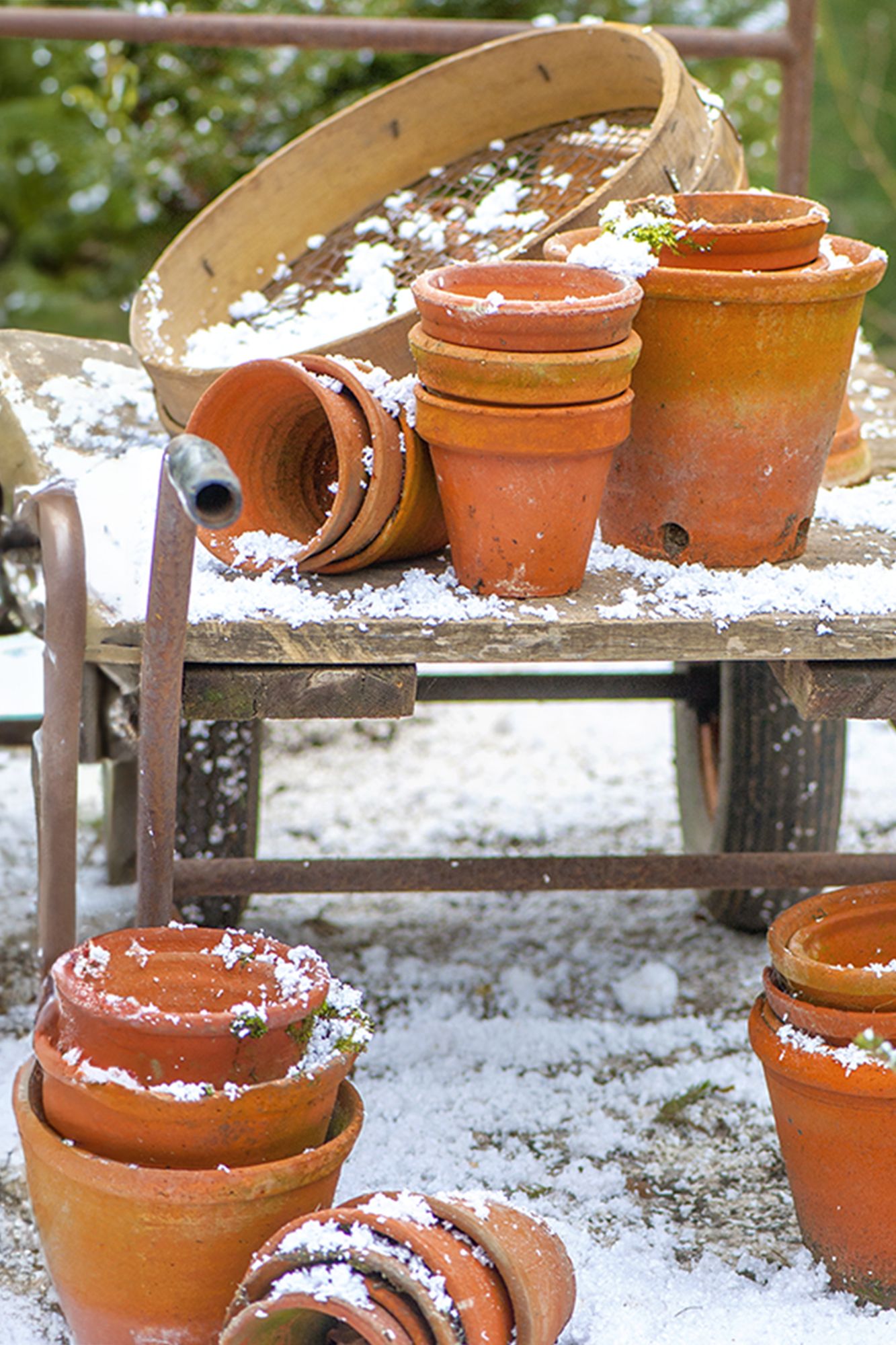This Simple Trick Stops Pots From Cracking in the Cold – Plus, the Worst Winter Storage Mistakes to Avoid
Protect pots from cracking in the winter cold with this one free and easy trick.


Container gardening is a practical way to make use of small spaces outdoors. Containers also allow you to decorate balconies, patios, porches, and more. Using pots year-round is simple for gardeners in warmer growing zones.
But outdoor planters in winter present a problem for gardeners in colder zones because they readily crack, sometimes even during the first frost. Container gardening in cold climates can still work, though, if you know how to store pots in winter to protect them for next year.
Ceramics and terracotta pots crack and break as water gets into even the tiniest of cracks and then freezes. But there's one simple trick that can help prevent this issue. I'll tell you what it is and provide some extra tips about what not to do with your containers in winter.
Why Pots Crack in Winter
Water has the unique property of expanding when it freezes. This is why those of us who live in wintery regions deal with so many potholes in the roads. When water gets into cracks in a brittle substance, like asphalt or terracotta pots, and then freezes, it expands and cracks the material.
Water can get into cracks in your pots and cause damage, even small cracks you didn’t notice. Even without any minuscule cracks, standing water in a pot that freezes will expand and potentially shatter the container.
This phenomenon can happen with nearly any material, even plastic pots. However, your ceramic planters and terracotta pots are at the greatest risk of fracturing over winter and becoming useless for container gardening by spring.

How to Protect Plant Pots From Frost
Of course, you can move potted plants indoors for winter to prevent them from collecting water that will freeze. A rolling plant caddy, like this one from Amazon, makes the job easier.
Sign up for the Gardening Know How newsletter today and receive a free copy of our e-book "How to Grow Delicious Tomatoes".
But you don’t have to go that far. There's one simple trick that works well enough to protect most containers from the cycle of freezing and cracking: tip your pots on their sides before your first frost date.
While water can get into small cracks from condensation and then freeze, the biggest risk is that containers collect rainwater, sprinkler water, or melting snow and then freeze. The easiest way to avoid this is to empty the pots and tip them over.
Make sure you dump out the plants, soil, any any residual water then dry the inside of the pot. If your pots are already empty and dry, simply tip them over and leave them for winter.
This neat little trick prevents water from collecting, but it also protects pots from another risk. Strong winds and even wildlife in your garden in winter can tip over your pots, causing cracks and breaks. The pots are more stable tipped over. Just be sure they can’t roll around in the wind. Place a couple rocks or bricks on either side of each pot to prevent them rolling around and getting damaged.

Additional Tips
While tipping your pots over presents the easiest solution to preventing cracks and breaks, there are plenty of other methods you can use to protect your container garden:
- You can leave pots upright if they have no existing cracks and if the drainage hole is clear and able to drain away any collected water.
- For additional protection, raise your pots up with pot feet, which you can find on Amazon, or other structures to keep them off the ground.
- Group pots together to help prevent tipping.
- Store pots indoors for winter. Utilize any structure or area of the home that won't reach freezing temperatures, like a garage, shed, or basement.
- If you have any potted plants you might want to keep, consider overwintering them indoors. Many annuals used for container gardening make good houseplants.

Mistakes to Avoid
Protecting your pots in winter can be very simple. Unfortunately, it's also easy to make some winter container gardening mistakes and increase the chances that pots will crack or break.
While not leaving water inside pots is obvious, it's also important to remove potting soil. Soil can hold a lot of water that will expand as it freezes. But you don't have to throw it all away. There are many ways to reuse old potting soil in the garden, like adding it to your compost pile.
In an attempt to save space, you might stack your pots. But this can actually cause damage. It's best not to stack pots, but if you absolutely have to then stack them loosely. Place a layer of newspaper or other material in between each stacked pot to protect them from breaking.
Another common mistake is to try to protect containers by wrapping plant pots in plastic. Plastic insulates and can keep your pots warmer than the surrounding air. But on the other hand, moisture can easily collect under that plastic and then freeze and crack your containers. Put wrapped pots under cover, so they don't collect and trap water and then break.
Container gardening has a lot of benefits, but you shouldn't have to buy new pots every year. Take a few minutes to protect your pots for winter and enjoy them season after season.

Mary Ellen Ellis has been gardening for over 20 years. With degrees in Chemistry and Biology, Mary Ellen's specialties are flowers, native plants, and herbs.